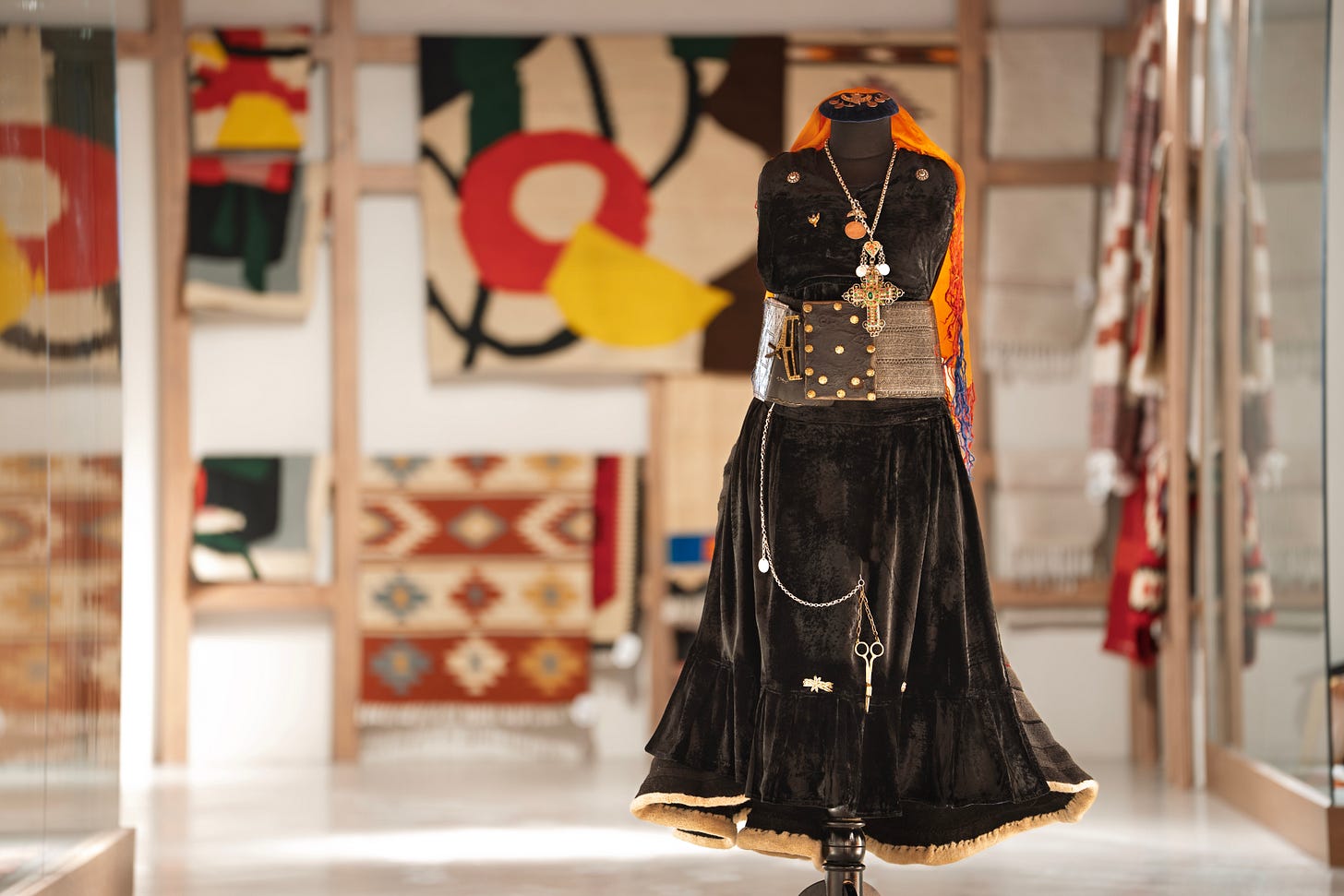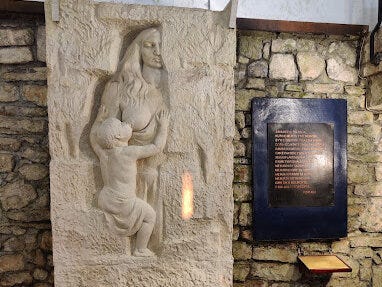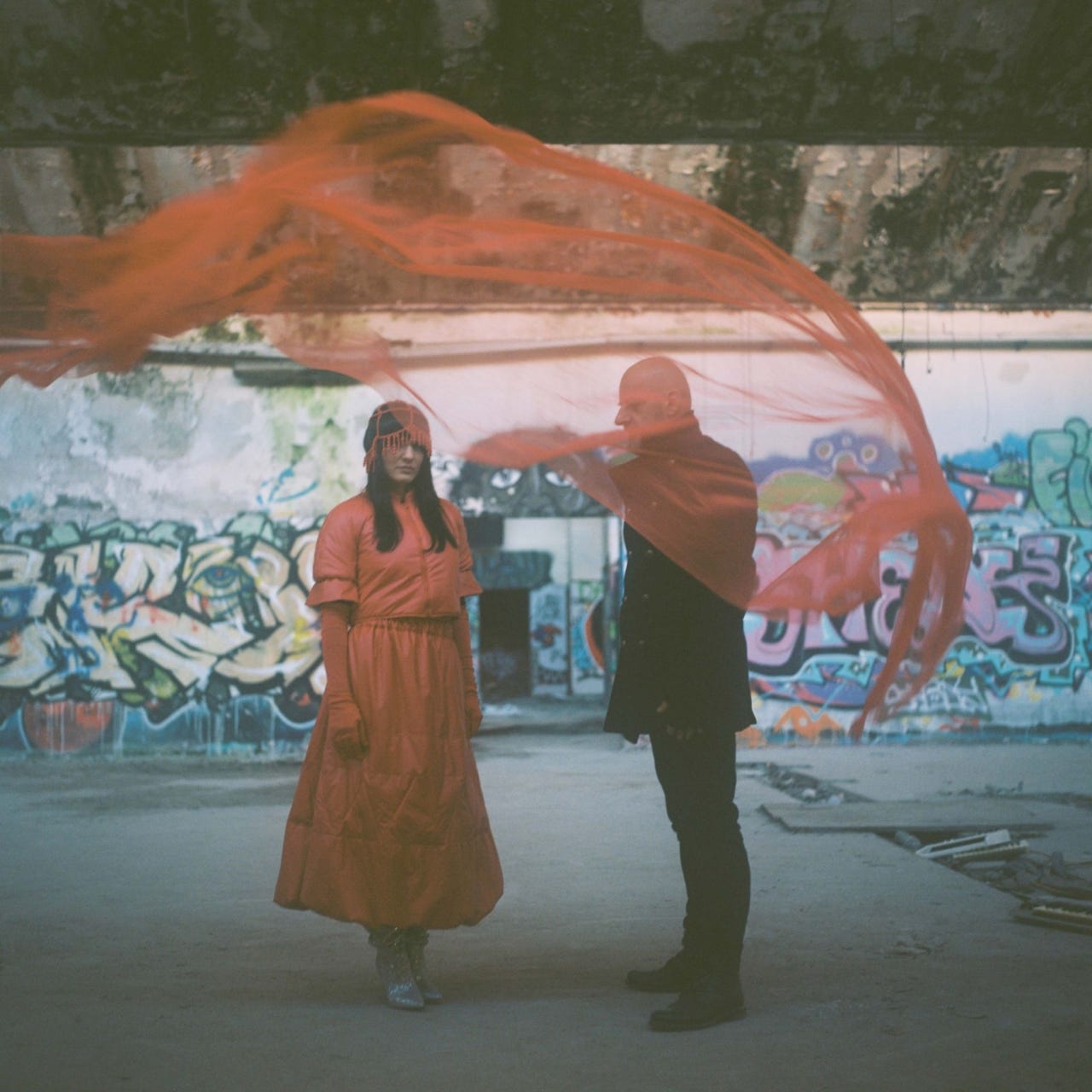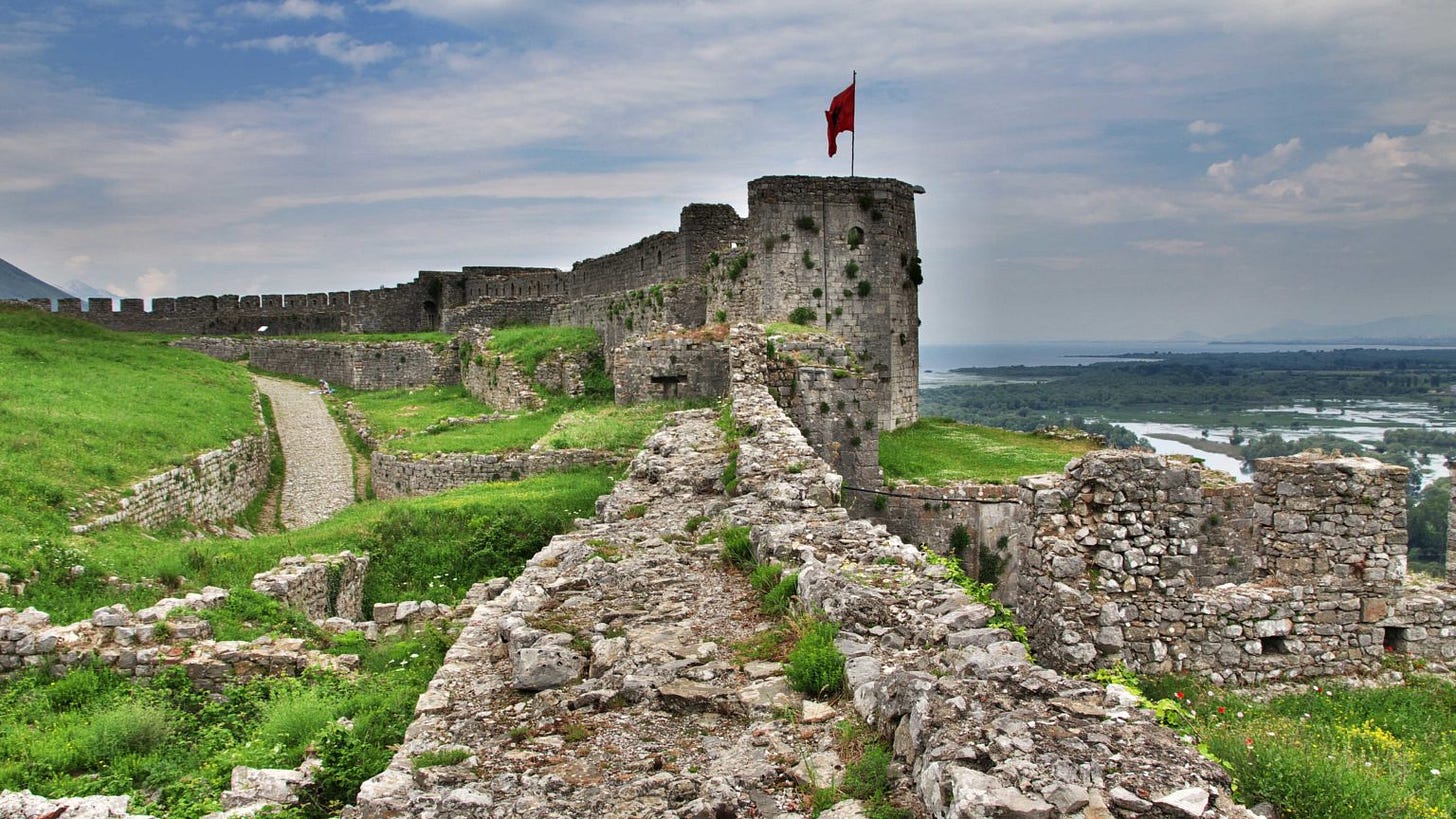Albania's Eurovision Song: A Perfectly Cynical, Resilient Electro Ballad for the Ages
"Zjerm" is the anthem Albania didn't know it needed: a fierce fusion of modern and traditional proving this country will always burn bright, no matter the odds
Zjerm.
The strange-sounding Albanian word might not mean much to the average foreigner, but to Albanians, it’s the only lyric blaring in bars and restaurants these days as the continent gets ready for the Eurovision song contest this Tuesday.

What Does Zjerm Mean?
The title of Shkodra Elektronike’s song literally means “fire” in the Gheg dialect of Albanian, which is particular to the north of the country and Kosovo. It’s a distinct strain of the language that sounds quite different from the Tosk dialect spoken by Albanians hailing from central and southern Albania; Gheg Albanians pronounce vowels with a much broader, more open enunciation that makes it very easy to tell the difference between a northerner and southerner (in my opinion).
The more well-known word for fire in standardized Tirana dialect is zjarr.
“Zjerm” Preserves and Exemplifies Albanian Culture
This song is an epic electronic ballad that pays homage to potent symbols of Albanian culture and identity.
Most prominent is the çifteli, a plucked, two-string instrument played in the north of Albania and Montenegro. Its strings are plucked dramatically in the beginning of the song, before each chorus and throughout the stanzas, taking listeners to the skyscraping peaks of the north where male folk musicians and shepherds would play the simple and light instrument, often as they tended to grazing flocks.
The rarity of writing at the time made the çifteli a central tool in passing down folk traditions to the next generation in northern Albania via songs about love, honor, hardship and pride.
In many stories, young, lonely shepherds would play the çifteli as an ode to sorrow and desire, giving the instrument an aura of longing for one’s people and homeland that’s hard to miss in “Zjerm,” whose ending refrain goes:
Jarnane ti toka ime
Ku kam lindë, s'do të harroj
Jarnane ti bota ime
Vazhdo me shndritë, shndritë, shndritë, shndritë
Shine, my land - where I was born, I will never forget! Shine, you are my world, continue to shine, shine, shine…
The other integral cultural symbol employed by Shkodra Elektronike in “Zjerm” is the female lead singer’s reimagination and flaunting of a modern-day xhubleta and qystek.

The xhubleta is an incredible piece of living history. Albanian Night, a cultural center in Tirana I co-founded which teaches people about Albanian culture with an evening show, explains how xhubleta dresses (three are on display in its Costume Hall) are an integral part of Gheg identity:
This beautiful costume has been passed down through the generations and is still used today in remote parts of the country. Foreign travelers and scholars from the 18th-19th centuries have documented its importance in communal life and ceremonies, noting this garment’s ubiquity in the highlands of Shkodër, Rugova in Kosovo and eastern Puka district.
Historically, the xhubleta would vary according to the wearer’s age: white for young girls, red for brides and black for elderly women. The bridal xhubleta is the most decorated and beautiful, with a bridal dowry at times including several xhubleta, each with varying levels of decoration for different occasions.
Each one of these dresses is a wearable museum bursting with mythological symbols like the sun, moon and stars, which were seen as life-giving elements that protected and blessed the wearer. Embroideries of flowers, eagles, snakes, the gentle curves of rivers and the sharp reliefs of dramatic mountain peaks all feature prominently on this UNESCO World Heritage Cultural item that is still worn today at special occasions and festivals in Albania and Kosovo.
In an Instagram post, Gjergji describes the costume she wore in the music video as an elegant yet strong garment that both beautifies the wearer and protects her against harm. Scenes from the music video show flames consuming a newspaper decrying the rise of inequality and threatening large crowds of protestors; the xhubleta is worn as a suit of armor that lets Gjergji weather the various disasters coming her way.
The qystek, on the other hand, makes a brief cameo in the beginning of the music video; an ornate forehead decoration worn by women in northern Albanian regions like Shkodër and Malësia e Madhe, these headdresses are usually adorned with chains, coins, or metallic embellishments and are associated with folk customs and bridal wear.
Who is Shkodra Elektronike?
Kolë Laca and Beatriçe Gjergji, the duo that makes up the band representing Albania this Tuesday in Basel, are two Albanian immigrants to Italy born in Shkodër, a historically significant town in the north that has long been associated with the country’s most fantastical mythology.
An interview with Anabel Magazine reveals that the dress Gjergji will wear on stage during her performance, designed by her fashion designer mother, references Shkodër’s most famous fable: Rozafa, the woman entombed in the castle walls that still look out over the Buna River and the eponymous Lake Shkodër. The right-hand side of the dress is red, resembling blood vessels that symbolize Rozafa’s acquiescence to being inhumed in the castle walls on condition that her right breast, hand and leg remain free to caress and nurse her babe.

They say you can still see liquid seeping out of the castle walls today, as Rozafa continues to nourish her child - and uphold the fortress ramparts.

It’s hard to write about Albanian history, culture or politics without feeling emotional about what Albanians have endured. “Zjerm” is a subtle yet powerful ode to Albanian culture that mourns its erasure while calling for Albanians to hold on to their precious birthright and identity.
Branding their music as “Post Immigrant Pop,” the background of these artists tracks with modern Albanian history since the fall of the communist regime in the 90s.
The Difficult Past Couple of Decades for Albanians
Most Albanians left the country once the repressive dictatorship ended, after Ponzi schemes rocked its economy and civil war tore it apart. Today, there are (probably - this is a complicated question to answer because of poor record-keeping in countries like Turkey and Greece, plus the centuries of assimilation that descendants of Albanians in these countries have undergone) between eight and ten million Albanians worldwide, with about a third remaining in Albania.

The dictatorship of Enver Hoxha sought to completely revolutionize Albania, transforming it into a Marxist-Leninist state. Hoxha envisioned a self-reliant socialist state that would be the first-ever atheist country on the planet, ripping Albanians away from their houses of worship, fields and villages. Churches and mosques across the country were destroyed or repurposed, and religious leaders were persecuted.
The communist leader’s push for collectivization and industrialization led to the construction of large, state-controlled factories and projects focused on mining and infrastructure. The measures led to such a terrible state of impoverishment that Albania became known as the North Korea of Europe.
At one point in the music video, Laca and Gjergji stand in front of a barbed wire fence looking at a building resembling a concentration camp - many viewers believe it’s an infamous mental asylum where Hoxha imprisoned political dissidents.

As part of its repressive tactics, the regime heavily discouraged traditional displays of Albanian identity, including the wearing of the xhubleta and other folk costumes, which it saw as hindering the requisite march towards a brave new world of enforced social uniformity.
Yet Albanians never forgot their roots - the descendants of double-breasted banner bearers cling to their identity with the force of a people that has faced multiple attempts at destruction and displacement, only to come out on top.
Today, this sense of steadfastly holding on to one’s identity is felt strongest in nearby Kosovo, where tensions with Serbia never really disappeared, even after the ethnic cleansing of Albanians was ended by a NATO bombardment of Belgrade.
During the period leading up to the war, Serbian authorities outlawed Albanian language schools and media, as well as public expressions of Albanian identity. Families would host underground cultural evenings with songs incorporating the plucking of the çifteli as a symbol of Albanian identity in the face of ever-increasing suppression.
Does “Zjerm” Capture The Contemporary Albanian Zeitgeist?
Yes.
The song opens with an unabashedly sarcastic tone, imploring the listener to rage against the restraints which polite society and its ruling class wish for the masses to live by as catastrophes unfold around us.
This is an extremely Albanian way of seeing things: lovingly attached to the homeland and its powerful elixir of symbols, cultural artifacts and traditions, yet disillusioned with the political situation and skeptical that things will ever get better.
While the country has changed at a breathtaking pace and has improved steadily since the chaos of the 90s, it still has a - long - way to go.
Gjergji flawlessly captures this cynicism in the song’s opening verses: arrogant voices claim the skies are clear and adorned with a rainbow as the waters drown her, her mouth “never dry.” The Shkodrane calls for the listener to imagine a future with no soldiers, no pollution, no fumes of oil cannisters.
To actually address the issues facing the country and the world at large.
The song's unabashedly liberal bent doesn’t clash with its fiery, patriotic ethos. Albanians are entirely capable of alchemizing care for the environment due to their close attunement with their country's natural beauty and the desire to preserve a strong national identity.
In fact, these aren’t contradictory values at all, but instead intimately connected components of Albanian identity: deeply-rooted care for the motherland, coupled with a vibrant national consciousness.
“Zjerm” asks the land to continue shining, despite the hardships that threaten her and her people:
Njerëz't e mirë e njerëz't pa emër
Kërcejnë valle n'shpirt
The good people, the people with no names (the forgotten people of history? Albanians, who were hidden for so long from the outside world by the regime? Those killed in the Kosovo war?) - dance valle, the ancient Albanian circle dance, in their souls, never forgetting for a moment who they are.
It's adherence to these very traditions that lets them persist.
The fire cleanses and destroys - coming from the land, the stars, purifying everyone and everything in its way with near-religious zealotry. Laca, whose verses undoubtedly portend war, conflict and general ruin, warns that even as the fire attempts to consume these tribal dances, their steps rattle like an avalanche on the mountainsides, heard leagues away.
No matter the adversities Albanians face, they persevere, safeguarding a peoplehood that won’t ever be erased.
Jarnane ti toka ime
Ku kam lindë, s'do të harroj
“Zjerm” is a beautiful, haunting, yet refreshing song that mixes traditional Albanian musical elements with modern electronica, showcasing a unique culture that Europe - and the rest of world - have yet to discover.
Here’s to hoping Albania wins Eurovision this year.
Albanians will certainly have earned it.
If you enjoyed this post, feel free to subscribe or leave a comment below. If you want to learn more about Albanian culture, check out Albanian Night, the country’s first-ever ethnocultural center and entertainment venue that allows you to experience Albanian culture firsthand.










